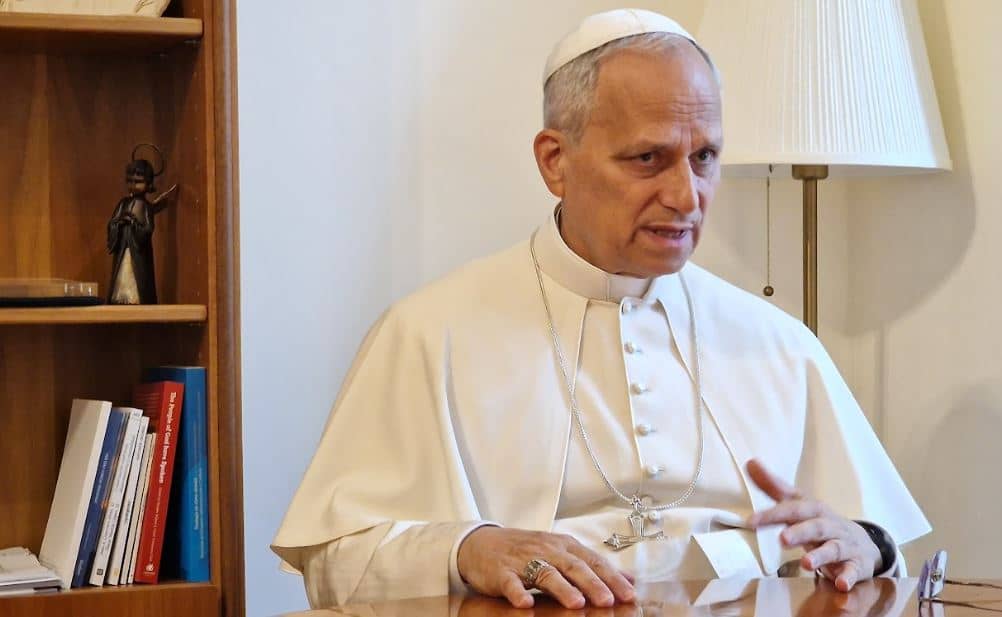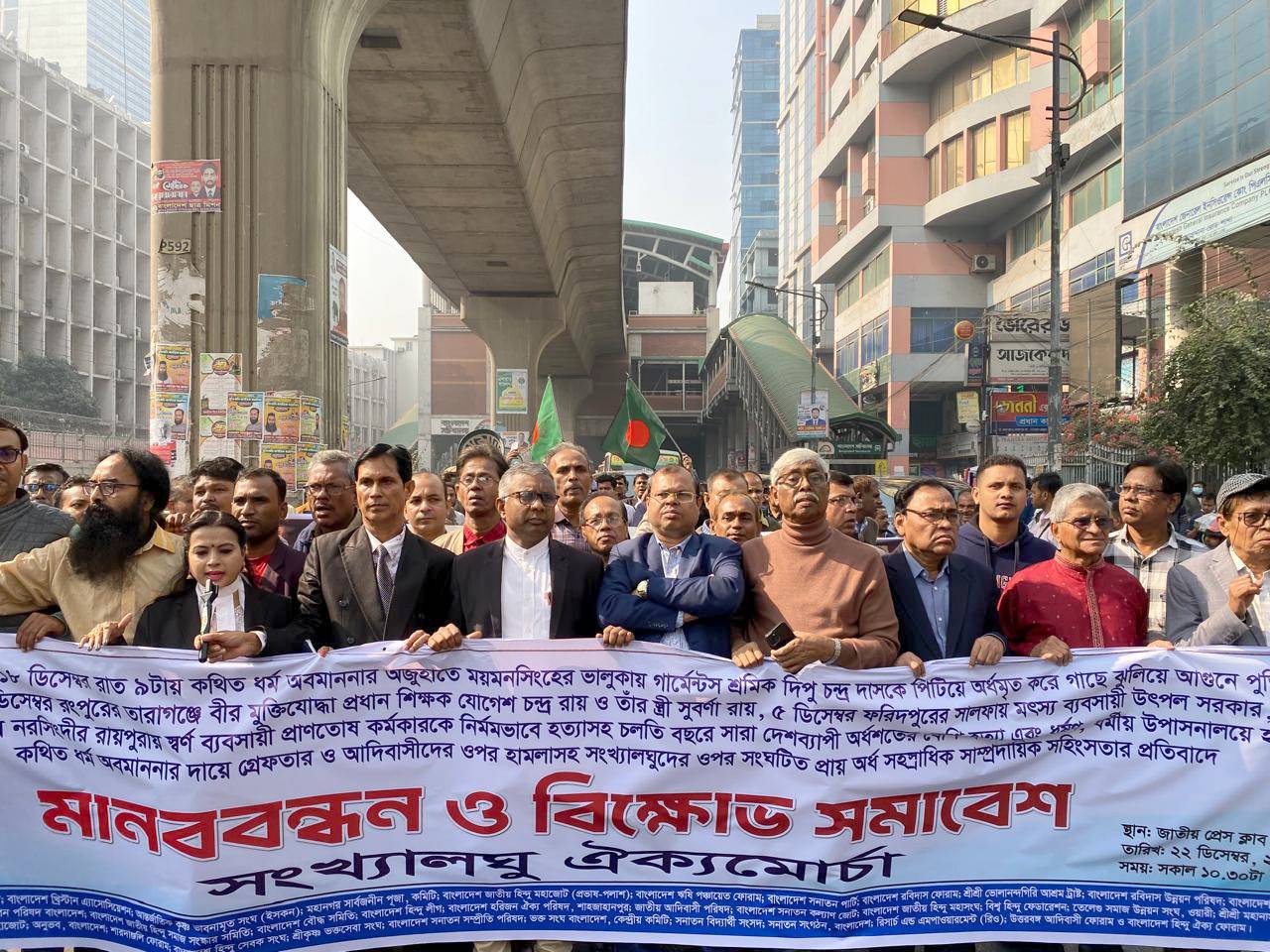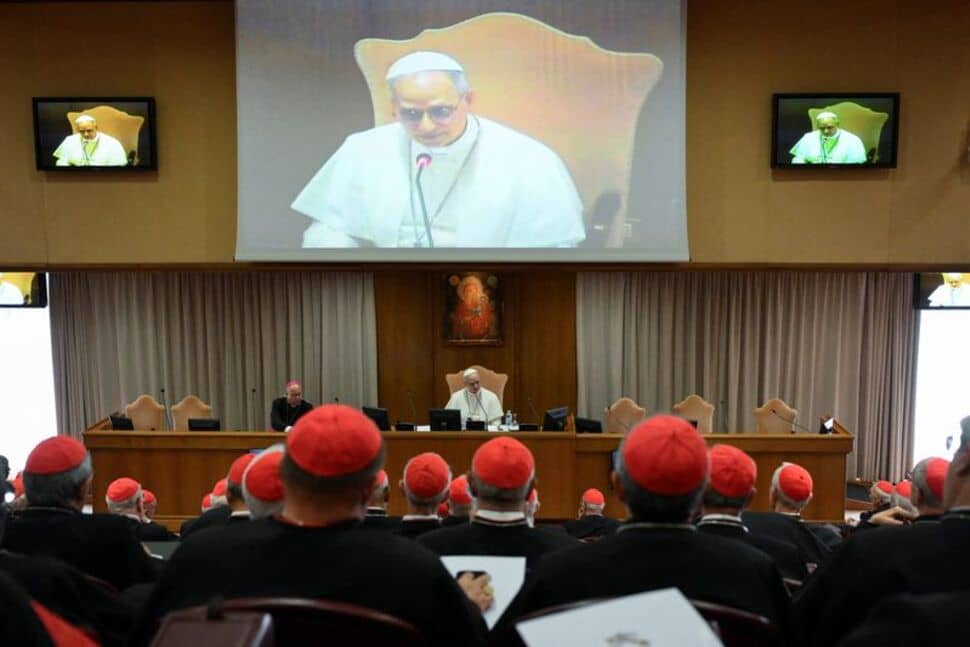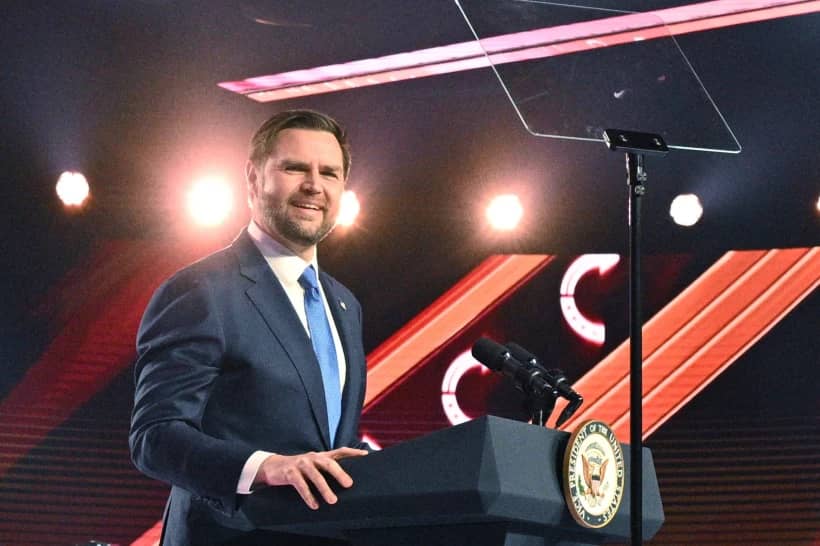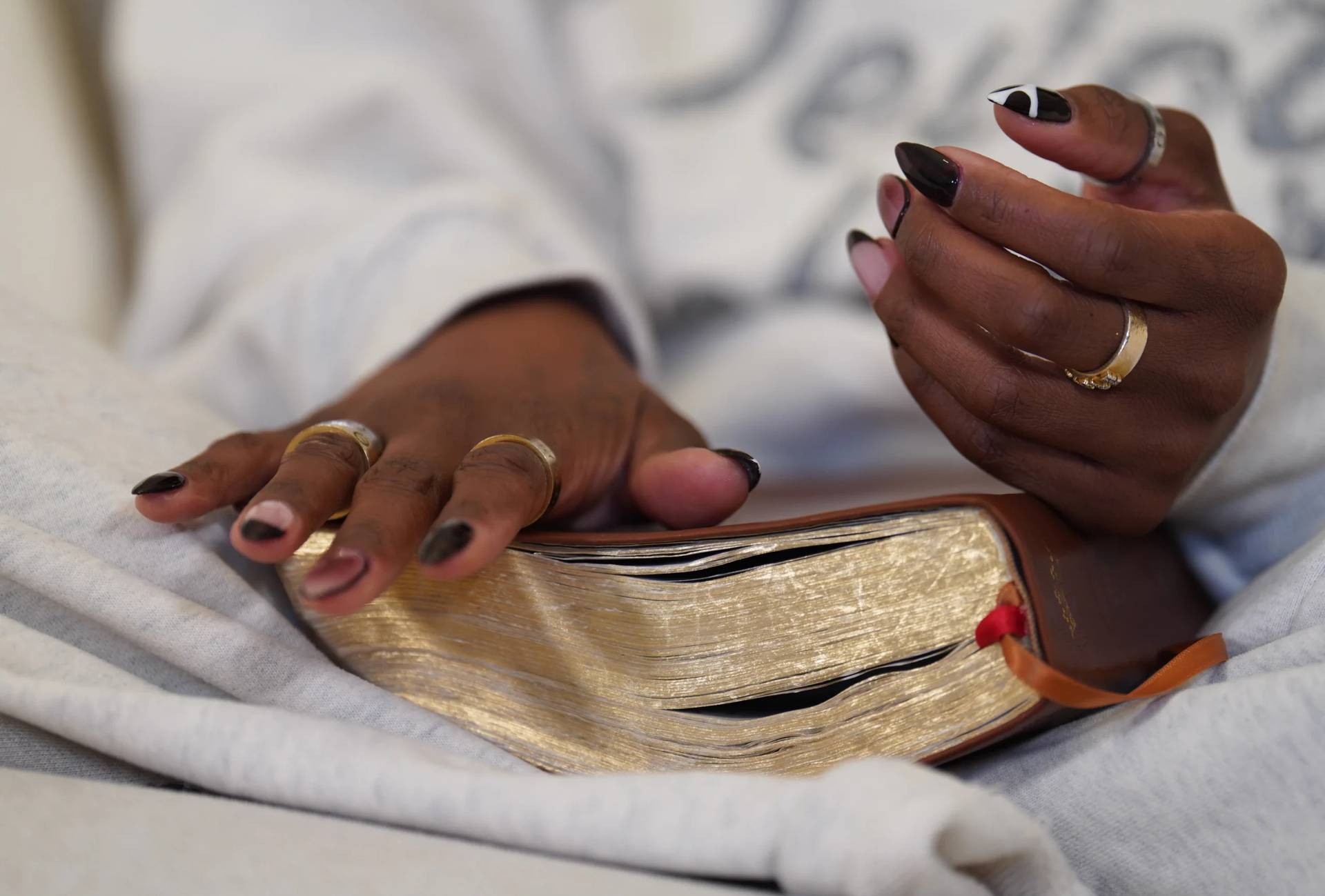VIENNA, Austria – In a hyper-political world, one in which pretty much everything is assumed to serve either a left-wing or right-wing agenda, Cardinal Christoph Schönborn of Vienna, Austria, asks Catholics tempted by the culture wars a provocative rhetorical question: Which way did St. Thomas Aquinas lean?
The right answer, according to the 72-year-old Dominican intellectual, is “neither.”
“I never thought Aquinas is conservative or progressive,” Schönborn said. “He’s simply bright and Catholic.”
Schönborn spoke to Crux during an exclusive interview in his archbishop’s office in Vienna on May 30.
Considered one of Europe’s most influential Catholic prelates, and twice viewed as a serious contender for the papacy, Schönborn has personal experience of how the ideological goalposts can move in terms of how Catholic leaders are perceived.
In the early stages of his career, Schönborn was seen as a conservative protégé of Cardinal Joseph Ratzinger, under whom he studied as a graduate student in theology. As the editor of the new Catechism of the Catholic Church issued under St. John Paul II in 1992, Schönborn was viewed by many theologians as part of a “restorationist” agenda to recentralize control of the Church’s intellectual life in Rome.
Today, by way of contrast, Schönborn is often seen as a progressive ally of Pope Francis, having been a protagonist in two Synods of Bishops that led up to the pontiff’s controversial document Amoris Laetitia and a major defender of it after its release.
Schönborn argues that the three popes he’s known and served form a single work of art.
“I would say it’s a kind of triptychon,” he said.
“John Paul and Benedict in their pontificates had to secure the basics of Catholic teaching, which were seriously menaced. Pope Francis, as a deeply rooted Jesuit, brings this awareness of where people stand, where they are, how their lives are, and where they have to be led, patiently and with attention.”
On another point, Schönborn issued a wake-up call for the Church in Europe, saying there’s no guarantee the faith can’t die out there amid a strong secular tide the way it vanished historically for other reasons in Turkey and North Africa.
At the same time, Schönborn said he sees hope in today’s immigrants arriving in Europe, and in small but dedicated pockets of youth.
Part one of Crux’s conversation with Schönborn, focusing on Amoris Laetitia, appeared yesterday. Here, Schönborn discusses his own development as a thinker, the inadequacy of seeing the Church in terms of left v. right, the relationship among the last three popes, and his assessment of the future of the faith in Europe.
Crux: Twenty years ago, you were seen as the conservative protégé of Cardinal Joseph Ratzinger. Today, many see you as a progressive ally of Pope Francis. Have you changed, has the Church changed, or does all this simply illustrate why the categories of ‘left v. right’ are inadequate?
Schönborn: Very much the latter. Of course, there is development in everybody’s life. As a young theologian, Joseph Ratzinger was considered very progressive, and after Vatican II more and more as a conservative. As a cardinal, he was treated as the Panzerkardinal. As pope, we, his former students, were amazed to see how he opened his arms, because we had never seen that gesture. The papacy did a lot to him, of course.
I’ve also developed in my life. As a young Dominican in the period around 1968, I was very leftist … radical, socially committed, never Marxist, but my heart was very much on the left. In some ways, it’s still there. Then I saw the disastrous effects of 1968 within the Dominican order, in Germany and France. I discovered Oriental theology, the Orthodox tradition, and the Church fathers. I had the chance to be led deeply into Thomas Aquinas by an old Dominican who became my spiritual father and my teacher. I became what I hope I still am as a theologian – very much oriented to the Church fathers, to the great Oriental tradition, and to Thomas Aquinas. I never thought Aquinas is conservative or progressive, he’s simply bright and Catholic.
My teachers, my main masters, were Hans Urs von Balthasar and Joseph Ratzinger. Would you say they’re conservative? Would you say they’re progressive? These categories are wrong. They’re great, they have great minds. I’ve never seen Joseph Ratzinger as a narrow man, but as a very firmly Catholic teacher.
When I was called to be secretary of the drafting committee for the Catechism of the Catholic Church, which was probably the most important work I had to do in my life, the task was to express in an accessibly, synthetic and organic way the whole of Catholic teaching. It was an amazing adventure, under the guidance of Cardinal Ratzinger, to elaborate this work together with a great team, great people, working closely together.
When Pope Francis was elected, for me it was never seen as a break. I would say it’s a kind of triptychon: John Paul and Benedict in their pontificates had to secure the basics of Catholic teaching, which were seriously menaced. Pope Francis, as a deeply rooted Jesuit, brings this awareness of where people stand, where they are, how their lives are, and where they have to be led, patiently and with attention. He’s doing with the Church, and even beyond the Church, what Ignatius wanted to do with the Spiritual Exercises – to take a person where she is in her life, in her situation, and lead this person step-by-step with discernment to a full commitment to Christ. I see a great complementarity, and I see it also in papal teaching. Familiaris Consortio and Amoris Laetitia are, for me, very complementary. [Note: Schönborn is referring to St. John Paul II’s 1981 document on the family and that of Pope Francis from 2016.]
Forget about the categories [of left v. right]!
Do you still believe the catechism is the most important work you’ll ever do in your life?
Yes, yes. It was a tremendous experience to focus not on what theologians think, but what the Church teaches, and to express it in a way that’s not bricks in a backpack that you have to carry without understanding, but to see the nexus mysteriorum, as the Church says, the nexus of mysteries. The purpose of a catechism is not immediately pastoral, but it’s the basis for good pastoral work. With the Catechism as a tool, we can do what Pope Francis calls the Church to do, which is to be missionary.
You were in the conclave that elected Pope Francis. You knew Cardinal Bergoglio to some extent prior to his election, and you worked closely with him since his election. Does he surprise you, or is this more or less what you thought you were getting?
No, he surprises me. He’s surprised me form the very first day, when he stood in the balcony and bowed down in silence asking for the prayer of people. And since then he goes on surprising us.
[Spokesman: but you were expecting to be surprised. The first thing you said to me after the conclave was “we will see surprises in the manner of John XXIII”]
Yes, that is true. I expected surprises.
So in that sense, he delivered. He keeps pulling rabbits out of the hat …
Well, I don’t know whether they are rabbits, but it’s again, and again, the freedom of the Gospel. Jesus was always surprising. First of all, for his own disciples. They were hard to understand him, and nevertheless, he loved them. I think that what is so beautiful is the freshness of the Gospel. But for me, there is not a break. When John Paul was elected, coming from the East, from a Communist country…Have you seen the movie Nine days that changed the world? Living here in Austria, near the Communist border, it was amazing. His first visit here in Vienna. Of course, there were also difficult moments, but there’s no doubt that it was great.
And then there was the much shorter pontificate of Benedict. It was surprising for us as his students to see him in the crowds, and doing well. And the general audiences were much more crowded than with John Paul. And this great gift of teaching, which we knew from his lectures, his books and his homilies. I must say, my experience now, with three pontificates I have known closely, is the miracle of the papacy. It’s fascinating, and it continues to fascinate.
And by that you mean that it might bring things out of people that you might not have seen coming?
Yes, yes. And I think the Lord, who is guiding the Church, leading the Church through his spirit, is giving the Church the shepherd that the Church needs at the time. My pre-predecessor was a key man for the election of John Paul: Cardinal [Franz] König and Ratzinger also. I think we have been immensely blessed by this pontificate. As by the subsequent pontificates – each one right for its time.
We’re right next to a painting in the Archbishop’s palace with deep significance for the Archdiocese of Vienna and the Church in Austria. Can you tell us the story?
It’s a very moving story. On Oct. 8, 1938, Hitler invaded Austria. On the eve of the invasion, the feast of the Holy Rosary, then-Cardinal [Theodor] Innitzer convoked the Catholic youth of Vienna, unofficially, to meet at the cathedral. Between 7 and 9 p.m., a thousand young people gathered there. The cardinal gave a very strong homily, saying, “Jesus Christ is our Führer!” There was great enthusiasm with the young people gathered here around the palace, who shouted, “We want to see our bishop!” which was a provocation because the Hitler Youth called out, “We want to see our Führer!” So the cardinal came to the window and gave a blessing, and then said, “Please go home, please go home in quiet.”
The first round-up of by the police took place on that evening, the 7th of October. And the next day came the revenge. The Hitler Youth invaded the palace, they broke the gates, they vandalized the whole house …
For those who don’t know Vienna, this is not a palace set up on a hill somewhere, this is right in the middle of the town where demonstrations would take place …
And still today, around the house, yes. So, the Cardinal stayed in the attic. The secretary was thrown out of the window, and seriously wounded. And at the end, finally the police came, when everything was done. And the Cardinal said, [pointing at the painting]: “This remains as a memory.” You can see where the Hitler Youth slashed the body of Jesus. So this remains as a memory of this unforgettable day. It happened exactly one month before the burning of the synagogues in the entire German Reich.
Of course, you personally didn’t live that, but you certainly know the history …
My mother was 18 at the time, she’s still alive, 97, and she remembers very well that tragic moment.
In any event, it’s part of the family story, part of the story of the archdiocese. Does that give you confidence as you look at problems inside the church today, or cultural issues? Does the history give you a bedrock of confidence that we’ve gotten through that, we’ll get through this too?
Well, we have no promise that Europe will not have the fate of Turkey that was entirely Christian, [or] North Africa, that was entirely Christian. But there is hope. There are signs of revival. But in a much poorer situation: the Church is experiencing a shrinking, a great shrinking, but I trust in the Lord. And he is the good of the Church. Why shouldn’t there be a real renewal of the Church? Let’s pray for the Holy Spirit.
You said there are signs of hope. Here in Vienna, what are those signs?
The Christian immigration, for one. We have a variety of immigrant communities coming from all over the world, from China to Latin America. They are bringing in much new fervor, new ferment, new life into the life of the local Church. And then there are good signs in the young generation. Of course, the young generation is much smaller, because of the lack of children, it’s a fact. But if you go on Pentecost to Salzburg to the great Catholic youth gathering, you’ll find a living Church.







